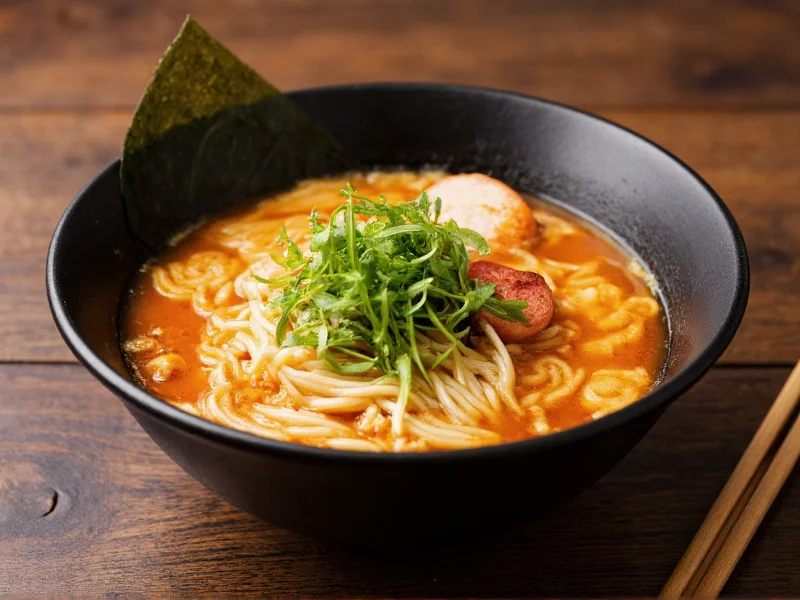Instant ramen has become a global pantry staple, and Maruchan stands as one of the most recognizable brands in this category. Understanding what makes Maruchan ramen distinctive requires examining its history, preparation methods, nutritional profile, and cultural significance beyond the basic instant meal.
Maruchan's Journey to American Shelves
Founded in Japan in 1958, Maruchan entered the United States market in 1970, introducing American consumers to affordable, convenient noodle soup. The brand's name combines "maru" (meaning "round" in Japanese, symbolizing completeness) and "chan" (a term of endearment). Unlike some competitors that target premium markets, Maruchan has maintained its position as an accessible everyday option, with its iconic red package becoming synonymous with quick meal solutions for students, busy professionals, and households worldwide.
Exploring Maruchan Ramen Varieties
While chicken flavor remains the most popular variety in the United States, Maruchan offers an extensive range that caters to diverse palates. Their product line includes traditional Japanese-inspired flavors like miso and soy sauce, bolder options such as spicy kimchi and hot chili, and regional specialties including beef, shrimp, and oriental. The brand has also expanded into cup formats for even greater convenience and推出了 specialty lines like Dobashi ramen with more authentic broth profiles.
Perfecting Your Maruchan Ramen Preparation
Though the basic preparation involves boiling water, steeping noodles for three minutes, and adding seasoning, culinary enthusiasts have developed techniques to significantly elevate the experience. For optimal texture, many chefs recommend reducing water by 25% to concentrate flavors. Adding ingredients during cooking—such as a soft-boiled egg, sliced green onions, or nori sheets—creates a more substantial meal. The "restaurant method" involves cooking noodles separately from the broth, then combining them with additional ingredients for restaurant-quality results.
| Nutrient (per single serving) | Amount | % Daily Value |
|---|---|---|
| Calories | 190 | 9% |
| Total Fat | 7g | 9% |
| Sodium | 850mg | 37% |
| Total Carbohydrates | 27g | 10% |
| Protein | 5g | 10% |
Nutritional Considerations for Regular Consumption
Understanding maruchan ramen noodle soup nutrition facts is essential for those incorporating it into their regular diet. A single serving contains approximately 190 calories, with 7 grams of fat and a significant 850 milligrams of sodium—representing 37% of the recommended daily intake. The noodles themselves are primarily refined wheat flour with palm oil, while the seasoning contains flavor enhancers like monosodium glutamate (MSG). While convenient, frequent consumption without supplementation lacks sufficient protein, fiber, and essential vitamins. Many health-conscious consumers enhance their maruchan instant noodles with vegetables, lean proteins, and reduced-sodium alternatives to create more balanced meals.
Storage and Shelf Life Best Practices
Proper storage significantly impacts the quality of maruchan ramen varieties. Unopened packages maintain optimal quality for 8-12 months when stored in a cool, dry place away from direct sunlight. Once opened, transfer unused seasoning packets to airtight containers to preserve flavor. While many consumers wonder about maruchan instant noodle shelf life after expiration, properly stored packages often remain safe for consumption several months past the printed date, though flavor intensity may diminish. Freezing cooked noodles is possible but alters texture, making refrigeration the better option for leftovers.
Cultural Significance of Instant Ramen
Beyond its practicality, maruchan ramen noodle soup represents a fascinating cultural phenomenon. What began as post-war food innovation in Japan has evolved into a global comfort food with regional adaptations. In the United States, it's particularly associated with college life and budget-friendly eating, while in Asia, instant ramen often serves as a base for more elaborate home-cooked meals. The product's accessibility has made it a culinary equalizer, enjoyed across socioeconomic boundaries. Food historians note that instant ramen's popularity reflects broader trends toward convenience without completely sacrificing cultural food traditions.
Enhancing Your Maruchan Ramen Experience
Culinary enthusiasts have developed numerous techniques to transform basic maruchan ramen into more sophisticated meals. Adding a splash of rice vinegar brightens flavors, while a teaspoon of sesame oil adds depth. Incorporating fresh ingredients like spinach, mushrooms, or sliced meats creates restaurant-quality bowls. For those seeking how to make maruchan ramen better without significant effort, simply reserving half the seasoning packet reduces sodium while maintaining flavor. Many professional chefs recommend finishing the dish with a drizzle of chili oil or a sprinkle of toasted sesame seeds for added complexity.











 浙公网安备
33010002000092号
浙公网安备
33010002000092号 浙B2-20120091-4
浙B2-20120091-4